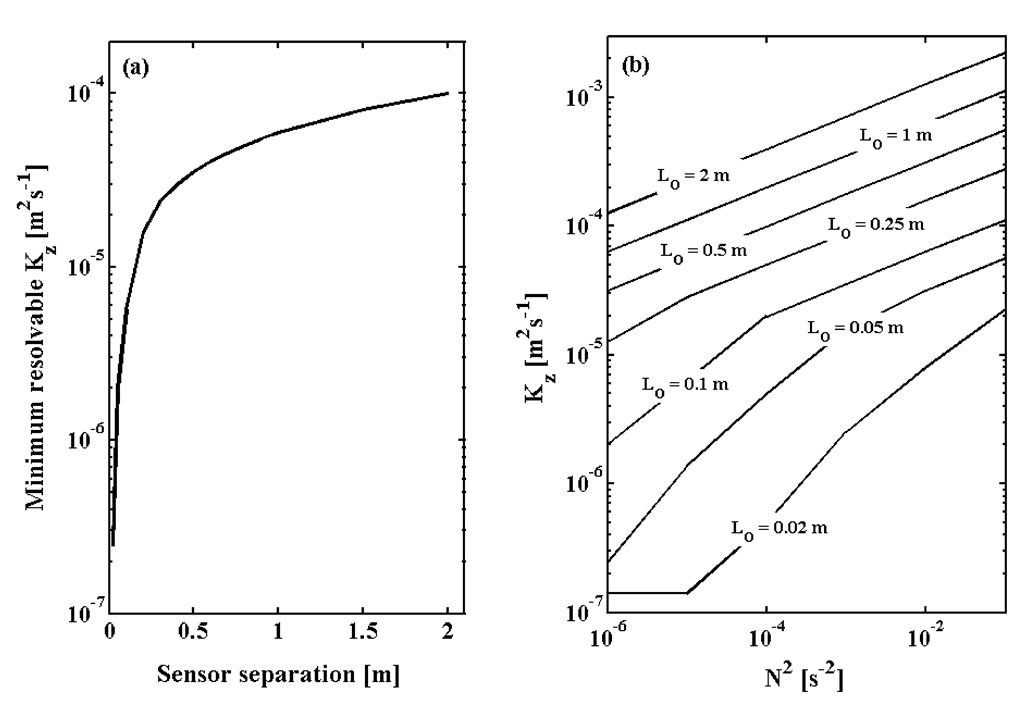| Mijanur R. Chowdhury, Ph. D.
|
|
Project Focus
Applicability of oceanographic turbulence mixing measurement methods in large lakes
Background and Motivation
Measuring
diapycnal mixing rates (Kz) in any water body is challenging, more so in relatively low energy limnic environment. Measurement requires
state-of-the-art fast-response equipments, particularly because turbulence acts
in very small temporal and spatial scales. A number of such equipments (e.g., microstrucutre profiler, ADV, ADCP) have been used to measure diapycnal mixing rates (Kz) in the ocean. Use of the microstructure equipments, though often regarded as the most accurate, is laborious and
requires a dedicated ship. Hence, Kz masurements by microstructure equipments rarely exceeds a
few days in duration. ADV on the other hand is a point measurement instrument. A
recent standard technique to quantify Kz
in the ocean and estuaries for longer period is to process current data acquired by an acoustic
Doppler current profiler (ADCP) by a variety of methods including 'the inertial
dissipation', 'the structure function', and 'the variance' method.
Making use of high-resolution temperature profiles by a chain of
thermistor loggers, few recent studies successfully have used 'the Thorpe-scale method' to measure Kz in the
ocean for longer period. In
this ongoing project, I am examining the applicability of the diapycnal mixing measurement
methods that was tested in high-energy oceanic environment in low engery limnic environment. My current focus is on 'the
Thorpe-scale method' and 'the variance method'.
The Thorpe-scale method
This method estimates Kz from the number and magnitude of density inversions
which can be calculated from the high-resolution density or temperature
profiles. Thorpe-scale method has mostly been applied on the measurements of temperature microstructure
profilers and Conductivity-Temperature-Depth (CTD) sensor data. Here, we make use of high-resolution
temperature profiles acquired by a chain of commercially available thermistor loggers to study the feasibility
of using them for long-term monitoring (~5-6 months) of Kz by comparing their resolving capability with microstructure-based Kz observations.
Method:
- A
long vertical thermistor chain was deployed at a depth of 20 m in Lake
Simcoe in late summer of 2011 to record temperature profiles every 4 s.
The chain consisted of 16
individual temperature loggers, with a vertical spacing of
1 m between 4.65 and 19.65 m depth. The Thorpe-scale method was
then applied on the measured temperature profiles to estimate Kz distributions (shown in Fig. 1, bottom panel).
- The estimated Kz distributions was compared with the Kz distribution (shown in Fig. 1, top panel) obtained from a Rig–based Kz model, the parameters of which was obtained for the field site based on microstructure-based Kz observations.
Key Findings:- The Thorpe-scale method on measured temperature profiles by a chain of thermistor loggers were able to
capture the spatial and temporal distributions of high values of Kz.
However, with the 1-m spacing, the method was not able to resolve
the more frequent lower magnitude turbulent events. (Fig. 1)
- We estimated that the minimum Kz
that can be resolved from 1-m sensor separation in our thermistor chain is on
the order of 10-4 m2 s-1. Hence,
we could not resolve any value less than 10-4 m2 s-1
in the epilimnion or indeed any value in the thermocline where Kz value is in the range of
10-7-10-6 m2 s-1.
The reliability of the estimate by the Thorpe-scale method on
thermistor data
is limited mainly by the size of resolvable overturns, which is
constrained by the resolution limitation in our deployment (1-m
vertical spacing between two immediate thermistors in the chain).
- We determined what would be an appropriate sensor separation in a
thermistor chain configuration to resolve different ranges of Kz. The minimum resolvable Kz
with different values of sensor separation is shown in Fig. 2a. In
general, sensor separation should be smaller than the Ozmidov scale (LO ) to obtain a good estimate of Kz. LO as a function
of the buoyancy frequency N2 (x-axis) and Kz (y-axis) is plotted in Fig. 2b.
- Based
on Figs. 1 and 2, we concluded that the use of the Thorpe-scale method on the
temperature profile measurements by a chain of thermistors will probably be
limited to measuring diffusivities of order of 10-5 m2 s-1
and higher. This is due to the typically low dissipation rates and high stratification
in lakes. As such, this method will not be applicable for resolving Kz profiles for the whole
water column. However, it has the possibility to be able to be used for long
time monitoring (i.e., whole summer duration) of internal turbulence mixing in a
small portion of the water column. For example, Kz in a 10-15 m deep epilimnion could be resolved by
such a chain with 0.5 m sensor separation. Similarly Kz in a 2 m thick benthic layer could also be resolved
by a chain with 0.1 m sensor separation0. Thermistor loggers with less than 5 cm sensor separation would
also resolve much of the diffusivity across the thermocline and the hypolimnion.
However, configuring a mooring with such small sensor separation is probably
unrealistic in the near future.
The variance method The variance method employs the variance of the
opposing beam velocities recorded by an ADCP to estimate Reynolds stress, from which Kz can be estimated. We have recently conducted a field study by deploying an
upward-looking bottom-mounted ADCP to record velocities in beam
coordinates in every 4 s. We are currently applying the variance method
on the dataset.
Publications
Peer-reviewed journal article:
- Chowdhury,
M.R., Wells, M., and
Cossu, R.,
(2015). “Observations of the
variablity of
vertical turbulent mixing and environmental implications in Lake
Simcoe”,
Journal of Great Lakes Research,
Elsevier,
under review (revise and resubmit stage).
|
|


